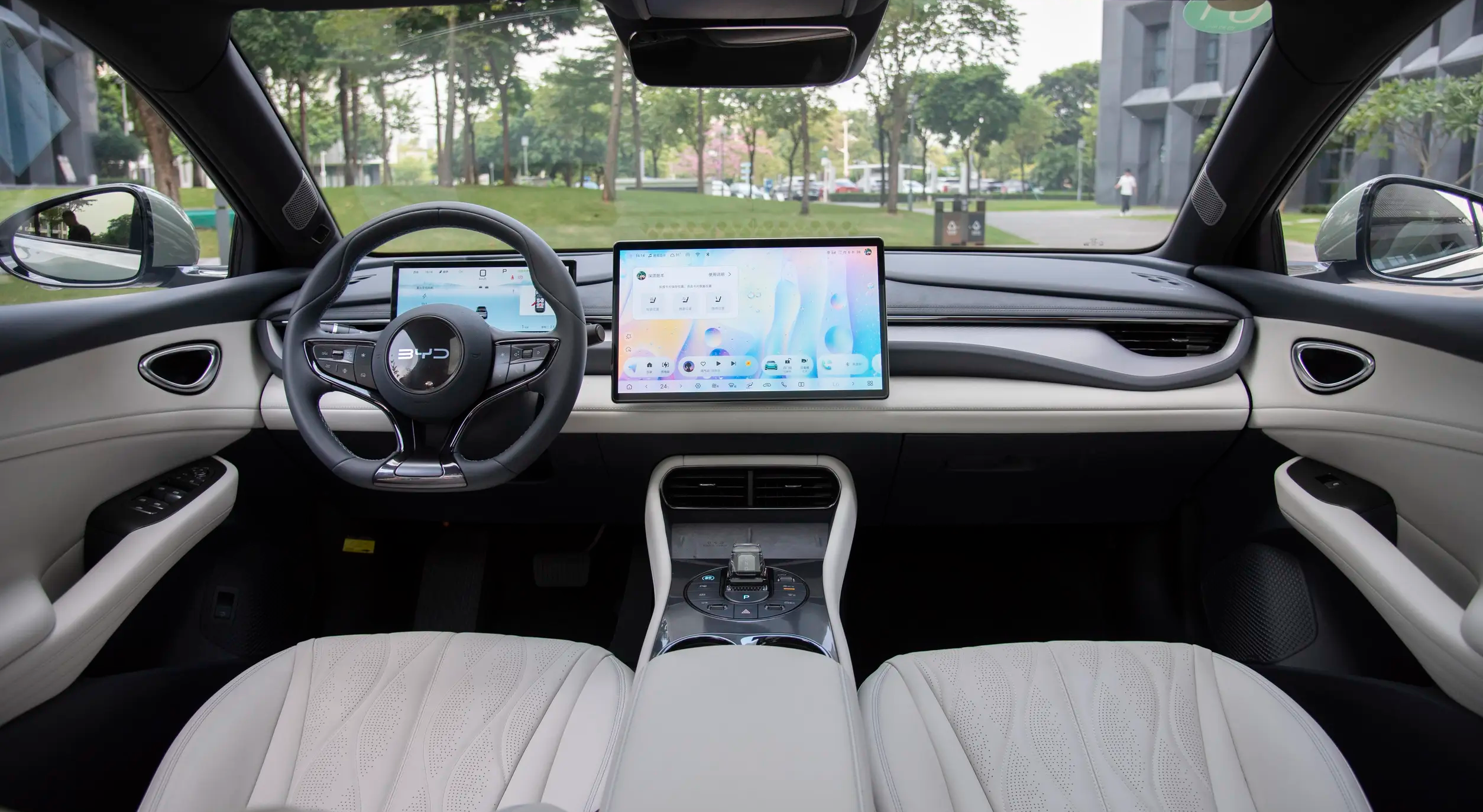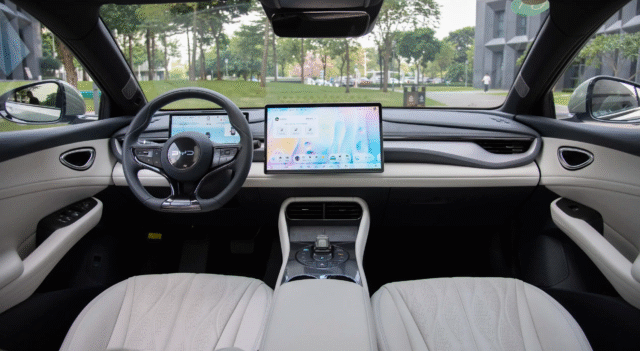
China’s electric vehicle (EV) giant BYD Co. has ignited a fresh wave of competition in the world’s largest auto market by slashing prices by up to 34% on 22 electric and plug-in hybrid models.
Announced on May 23, 2025, these steep discounts, effective until June 30, aim to boost sales amid weakening growth and economic challenges in China. However, the move triggered an 8.3% drop in BYD’s Hong Kong-listed shares, with peers like Li Auto, Geely Automobile, and Great Wall Motor also seeing declines of over 5%. Despite record-high sales volumes, the intensifying price war raises concerns about profitability and sustainability in China’s cutthroat EV sector, signaling a pivotal moment for the industry.
BYD’s Bold Price Reduction Strategy
BYD, China’s top-selling car brand, has slashed prices across its popular Ocean and Dynasty series to stimulate demand in a sluggish market. The most significant cut was applied to the Seal 07 DM-i dual-motor hybrid sedan, reduced by 34% (53,000 yuan) to 102,800 yuan ($14,300). The Seagull hatchback, already BYD’s most affordable model, saw a 20% price reduction to 55,800 yuan ($7,780), reinforcing its position as a sub-$10,000 EV that has garnered global attention. These discounts, coupled with trade-in incentives, are part of BYD’s strategy to clear inventory and meet ambitious sales targets, with the company aiming for 5.5 million vehicle sales in 2025.
The price cuts have driven a surge in consumer interest, with Citi analysts estimating a 30–40% increase in dealership footfall between May 24 and 25 compared to the previous weekend. If this traffic translates into sales, BYD’s May volumes could maintain their upward trajectory, building on its 2024 record of 4.27 million new energy vehicle (NEV) sales, including 1.76 million battery electric vehicles (BEVs) and 2.49 million plug-in hybrids. However, the aggressive pricing has sparked fears of a “rat race” price war, with analysts warning that profitability across the sector could take a hit.
Stock Market Fallout and Industry Impact
The announcement sent shockwaves through the Chinese EV market, with BYD’s Hong Kong shares tumbling as much as 8.3% on May 26, closing 8.6% lower after hitting a record high the previous week. Peers were also hit hard, with Li Auto dropping 2.37%, Geely Automobile falling 9.5%, Great Wall Motor declining 5%, and Xpeng losing 1.73%. The declines reflect investor concerns about intensifying competition and shrinking margins in an already brutal market, where over 200 EV manufacturers are vying for dominance.
Morningstar analyst Victor Sun noted that BYD’s vehicle margins are likely under pressure as the company prioritizes sales targets over profitability. Morgan Stanley analysts echoed this, stating that the “tough end market” is forcing BYD to make deep cuts, which could ripple across the industry as rivals like Chongqing Changan Automobile and Zhejiang Leapmotor Technologies follow suit with their own discounts. For instance, Changan offered a 25,000-yuan cash discount on its Deepal S07 model, while Leapmotor adjusted prices for its C16 and C11 SUVs.
The price war, initially sparked by Tesla in 2023 with cuts of up to 9% on its Model 3 and Model Y, has escalated into a “life and death race” for Chinese EV makers. High inventory levels—3.5 million cars, or 57 days of supply, the highest since December 2023—signal oversupply, further pressuring manufacturers to slash prices to move stock. Industry leaders like Volkswagen’s CEO have called the price war “ruinous,” while Xpeng’s CEO warned that most Chinese car companies may not survive the next decade.
BYD’s Competitive Edge and Global Ambitions
Despite the stock drop, BYD remains a formidable player, leveraging its vertically integrated supply chain to maintain a competitive edge. The company produces its own batteries and semiconductors, enabling cost control that mitigates the impact of price cuts. In Q1 2025, BYD reported a gross margin of 20%, compared to Tesla’s 16%, and a net income of 9.15 billion yuan ($1.27 billion), surpassing Tesla’s $409 million. This financial resilience has allowed BYD to pursue aggressive pricing without the same margin erosion faced by competitors.
BYD’s global expansion is also gaining momentum. In April 2025, the company outsold Tesla in Europe for the first time, registering 7,231 BEVs—a 169% year-on-year increase—while Tesla’s sales fell 49% to 7,165 units. The launch of the Dolphin Surf, the European version of the Seagull, priced at €23,000 ($26,000), undercuts Tesla’s cheapest model by $19,000, positioning BYD as a strong contender in the region. BYD’s focus on Southeast Asia and South America, coupled with a new factory in Hungary to bypass EU tariffs, further bolsters its international growth.
Technological advancements also enhance BYD’s appeal. The company’s “God’s Eye” advanced driver-assistance system, now standard across most models, rivals Tesla’s Full Self-Driving technology at a lower cost, and its new super-charging technology claims a five-minute charge time compared to Tesla’s 15 minutes. These innovations, combined with DeepSeek’s R1 AI model integration, position BYD to challenge global competitors.
Challenges Amid Economic and Regulatory Pressures
The price cuts come against a backdrop of economic malaise in China, marked by a property crisis, high local government debt, and cautious consumer spending. Government trade-in schemes and subsidies have boosted EV sales, with NEVs accounting for 46.7% of China’s car market in May 2025, but growth is slowing, with EV sales rising only 20.8% in 2024 compared to 74.2% in 2022.
BYD’s aggressive cost-cutting extends to its supply chain, with the company requesting a 10% price reduction from suppliers for 2025, raising concerns about supplier viability and potential compromises in quality. Posts on X have highlighted fears of rust issues and corner-cutting, which could harm BYD’s reputation if not addressed. Additionally, regulatory scrutiny in China over practices like marking cars as sold to meet targets adds pressure, with the commerce ministry investigating the resale of “zero-mileage” vehicles on the secondhand market.
Outlook for BYD and the EV Sector
BYD’s price cuts are a double-edged sword. While they strengthen its market dominance—commanding 16.2% of China’s overall vehicle market and 36.1% of the EV segment—the strategy risks further margin compression and industry consolidation. Analysts at Goldman Sachs predict that China’s EV industry could see negative profitability if price wars persist. Smaller players like Nio and Xpeng, already posting significant losses, face an uphill battle, with industry experts predicting many won’t survive the next decade.
For BYD, the focus remains on volume and innovation. The company’s 2024 sales of 4.27 million vehicles and Q1 2025 net income of 9.15 billion yuan demonstrate its resilience. However, sustaining growth will require balancing aggressive pricing with profitability, addressing supply chain pressures, and navigating global trade tensions, including EU tariffs and potential U.S. restrictions.
A High-Stakes Gamble in a Competitive Market
BYD’s decision to slash EV prices by up to 34% has shaken the Chinese auto market, driving a surge in consumer interest but triggering stock declines for itself and peers like Li Auto and Geely. While the strategy reinforces BYD’s dominance and global ambitions, it underscores the brutal nature of China’s EV price war, with thinning margins and oversupply threatening the industry’s sustainability. As BYD leverages its cost advantages and technological innovations, its ability to balance growth with profitability will determine its long-term success in a market where only the strongest will survive.





